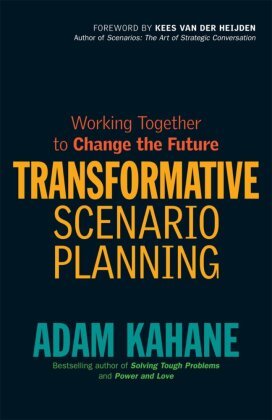Transformative Scenario Planning - Working Together to Change the Future. Forew. by Kees van der Heijden
| Verlag | McGraw-Hill Professional |
| Auflage | 2012 |
| Seiten | 168 |
| Format | 8,5 cm |
| Gewicht | 209 g |
| Artikeltyp | Englisches Buch |
| ISBN-10 | 1609944909 |
| EAN | 9781609944902 |
| Bestell-Nr | 60994490UA |
People who are trying to solve tough economic, social, or environmental problems often find themselves frustratingly stuck. They cannot solve their problems in their current context; the larger system within which they are operating is too unstable or unfair or unsustainable. They cannot transform this system on their own, or by working only with their friends or colleagues; the system is too complex to be grasped or shifted by any one person or organization or sector. And other actors whose cooperation would be necessary to transform the system don't understand or agree with or trust one another enough to work together.
This book describes a powerful new methodology for dealing with these challenges. Transformative scenario planning is a powerful way for actors from across a whole system to work together to transform that system. It is a way for them to get unstuck and to move forward on solving their tough problems.
Transformative scenario planning goes far beyond conventional,adaptive scenario planning, Often people find themselves in systems that are complex, conflictual, not working, and stuck. In such systems, people need a methodology not simply for adapting to the system but also for creating new, better futures. Transformative scenario planning is a way that people can work together with others to transform themselves and their relationships with one another, and thereby to transform their systems. In this simple and practical book, Adam Kahane explains this methodology and how to use it.
Inhaltsverzeichnis:
Chapter 1: Transformative Scenario Planning
Chapter 2: The Invention of This Methodology
Chapter 3: When Things Aren't Working
Chapter 4: Convening a Team That Can Shift a System
Chapter 5: Making Sense of What Is Happening
Chapter 6: Constructing Stories about What Could Happen
Chapter 7: Finding Ways to Move Forward
Chapter 8: Planting Seeds of Better Futures
Chapter 9: The Paradox, Dilemma and Mystery of Co-Creating

